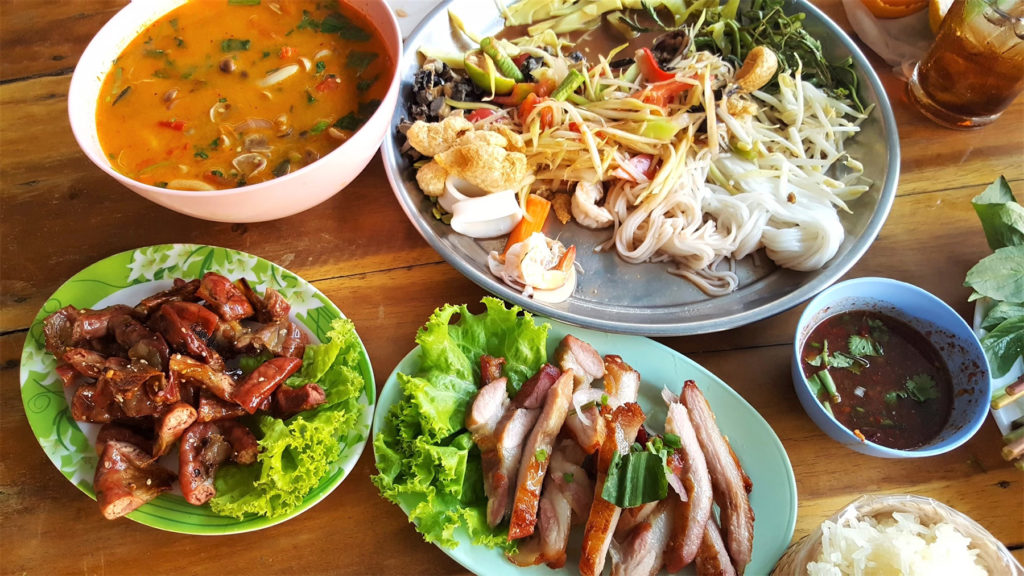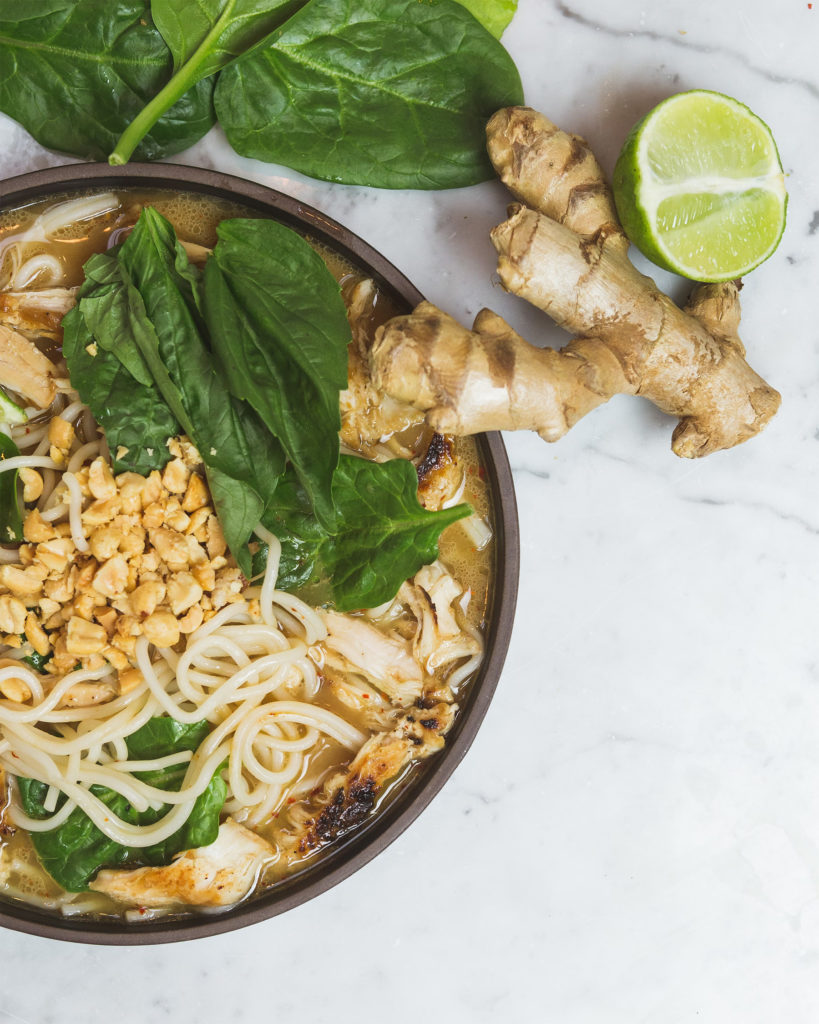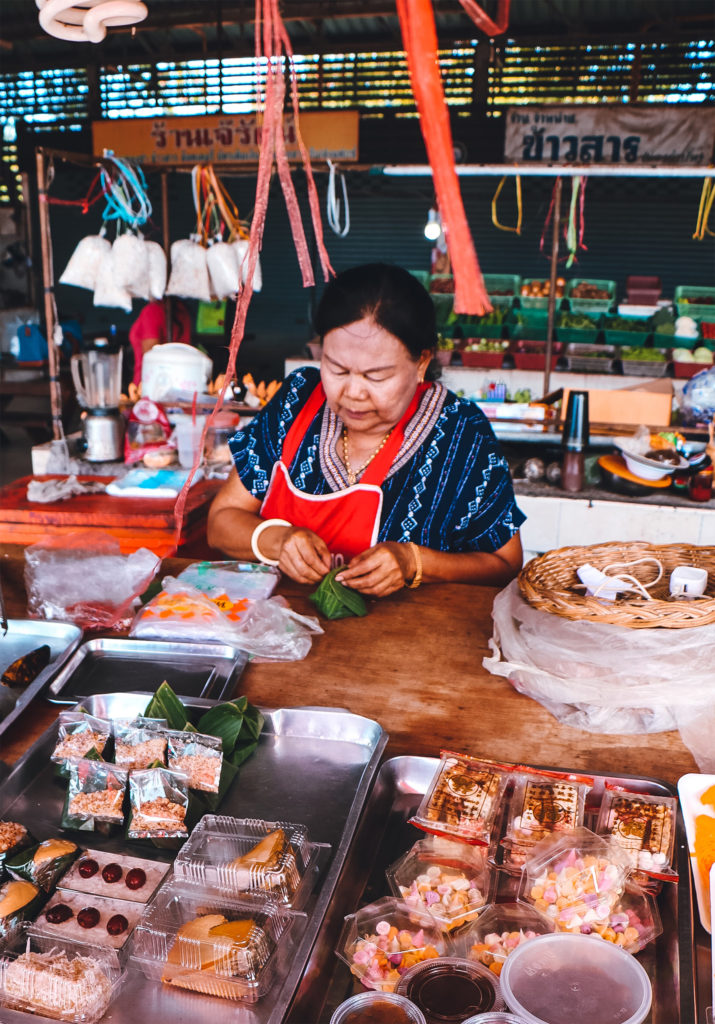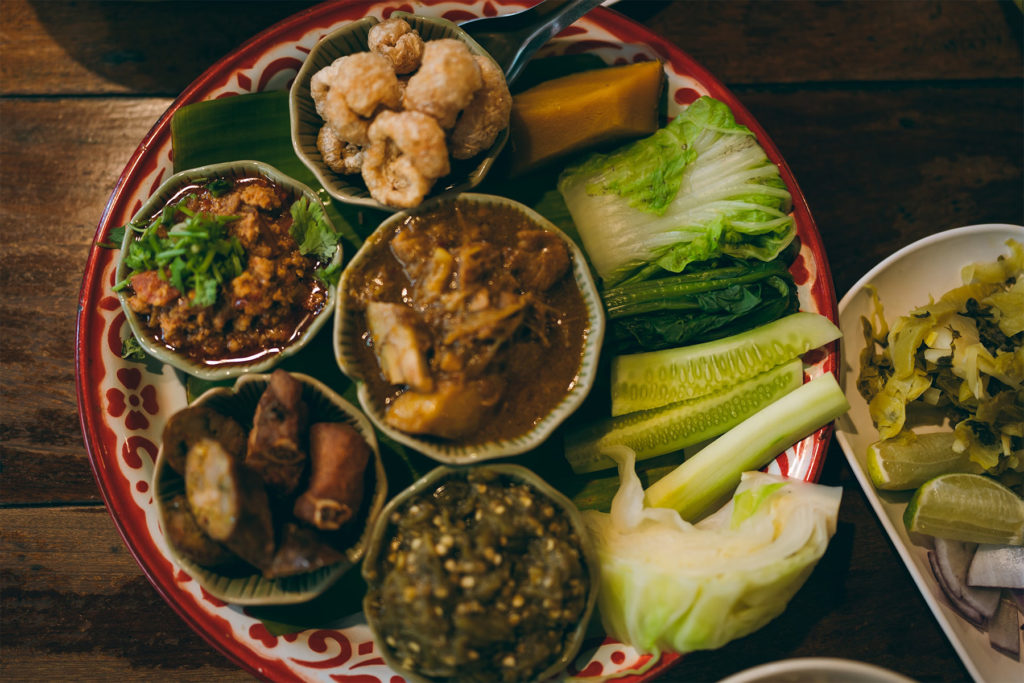
The specificities of Thai Food
Discover the richness of Thai cuisine, from traditional dishes to must-try restaurants, as well as famous chefs and foods to avoid.
Thailand through its cuisine
Thai cuisine is a reflection of the country’s cultural diversity, blending Chinese, Indian and even Western influences. What sets Thai cuisine apart is the subtle balance between sweet, salty, sour and bitter flavours. Dishes are often prepared with fresh ingredients such as aromatic herbs, coconut milk and chilli. This culinary richness is distributed regionally: the North is famous for its mild, spicy dishes such as Khao Soi, while the South offers spicier curries, influenced by Muslim cuisine. The cuisine of Central Thailand, where Bangkok is located, is the crossroads of all these influences, offering a varied palette of dishes.
Historically, Thai cuisine evolved from royal and popular cuisines, with a strong emphasis on the aesthetics of the dishes. Today, it is not only a pillar of national identity but also a major tourist attraction, fuelling a flourishing culinary market.

Traditional Thai dishes
Pad Thai** is undoubtedly the best known of Thailand’s emblematic dishes. This fried noodle dish is prepared with prawns, tofu, eggs, bean sprouts and peanuts. It can be found everywhere, from Bangkok street stalls to upmarket restaurants. Tom Yum Goong, a spicy, acidic prawn soup, is another must, often served in the centre and north of the country.
Som Tam, a green papaya salad, is particularly popular in north-east Thailand. It combines sour, sweet and spicy flavours. Gaeng Keow Wan, or green curry, is a dish rich in coconut milk and flavoured with Thai basil, often cooked with chicken or fish.
These dishes, although available throughout the country, are often associated with specific regions, reinforcing Thailand’s regional culinary identity.
Restaurants to do in Thailand
Thailand’s gastronomic scene is dominated by renowned establishments such as Gaggan Anand, a restaurant in Bangkok that offers progressive Indian cuisine with Thai touches. Chef Gaggan has been named Asia’s best restaurant several times. Another flagship restaurant is Sorn, in Bangkok, which specialises in southern Thai cuisine and has been awarded two Michelin stars.
For a more local experience, Jay Fai, a small street stall in Bangkok, became famous for its crab omelette, a dish that became iconic after the restaurant was awarded a Michelin star.
For those interested in discovering street food, Bangkok’s Yaowarat (Chinatown) district is a must-visit destination. Dishes such as baozi (stuffed buns) and Khanom Buang (Thai pancakes) are offered by a multitude of street vendors, providing an immersive and authentic culinary experience.


Gastronomic trends in Thailand
The culinary scene in Thailand is evolving rapidly, influenced by factors such as health, sustainability and technological innovation. One of the major current trends is the rise in popularity of healthy and sustainable food. Thai consumers are becoming increasingly health-conscious and are looking for plant-based dishes that are rich in nutrients and low in calories. This trend is reflected in the growing availability of vegan and vegetarian dishes in restaurants, as well as the incorporation of local and organic ingredients.
The farm-to-table concept is also gaining ground, with greater attention being paid to the traceability of ingredients and reducing the carbon footprint. Restaurants like Bo.lan in Bangkok focus on using local and seasonal produce, in direct collaboration with farmers.
Technological innovation is playing a crucial role in the evolution of gastronomy in Thailand. The rise of meal delivery apps and online booking platforms is transforming the way Thais access food, particularly in major cities such as Bangkok and Chiang Mai. In addition, the fusion of cuisines is becoming increasingly popular, with chefs combining elements of traditional Thai cuisine with modern techniques and international flavours.
Finally, gastronomic festivals continue to grow in importance, attracting both locals and tourists with events celebrating local cuisine and regional culinary talents.
Famous chefs
Gaggan Anand is arguably Thailand’s most renowned chef. His restaurant, Gaggan, has been ranked among the best in Asia for several years. He is known for his molecular cuisine and experimental dishes that combine modern techniques with traditional flavours.
Jay Fai, a street food chef, gained international acclaim when she became the first street food chef to receive a Michelin star for her crab omelette. Her unique style and commitment to using high-quality ingredients has set her apart in a culinary landscape dominated by high-end restaurants.
Boonserm Sathongun and Dylan Jones are the chefs behind Bangkok restaurant Bo.lan, known for its sustainable approach to traditional Thai cuisine. The couple work to promote ethical and environmentally-friendly food, incorporating sustainable farming practices into their cooking.

Thailand – Don’ts
Although Thai cuisine is famous for its diversity and rich flavours, some dishes can be problematic for Western visitors. Som Tam Pla Ra, a version of papaya salad with fermented fish, is an example of a dish that may be too strong in flavour for those not used to this type of fermentation.
Seafood, although very popular, should be eaten with care, especially outside the big cities where preservation standards may be lower. Poorly preserved seafood can cause food poisoning.
Finally, although street food is delicious, it can present risks if basic rules of hygiene are not observed. Stalls with long queues are generally a sign of freshness and quality. It is also advisable to avoid very spicy dishes if you are not used to them, as they can cause gastro-intestinal irritation.
Although Thai cuisine is rich and diverse, it is essential to be informed and cautious in your culinary choices if you are to fully enjoy the Thai dining experience.


Thai cuisine embodies the country’s cultural diversity and culinary ingenuity, offering a delicate balance of varied flavours. Traditional dishes such as Pad Thai or Tom Yum Goong bear witness to the influence of neighbouring regions and cultures. The gastronomic scene, enriched by renowned chefs such as Gaggan Anand and Jay Fai, offers a range of choices from haute cuisine to authentic street food experiences. Although culinary exploration in Thailand is generally safe and rewarding, a certain amount of caution is necessary, particularly when it comes to spicy dishes and poorly preserved seafood. All in all, Thailand offers a rich and diverse gastronomic experience, while requiring special attention to fully appreciate its culinary delights.